Out of roughly 3,400 species and subspecies of snake found in the US, there are 37 venomous reasons we wear heavy boots in the field and keep a really good eye out when we’re fishing close to shore in a boat or on foot. We know that’s where some of the deadliest snakes hang out.
According to the CDC, venomous snakes strike about 7,000 people in the US each year. For about five of those unfortunate souls, it’s a fatal encounter. Of course, a cool head, quick transportation to a medical facility, and antivenin treatments will usually save you from the big sleep. However, there’s still a chance you could lose a digit or appendage depending on the severity of the bite and the type of snake that does the biting.
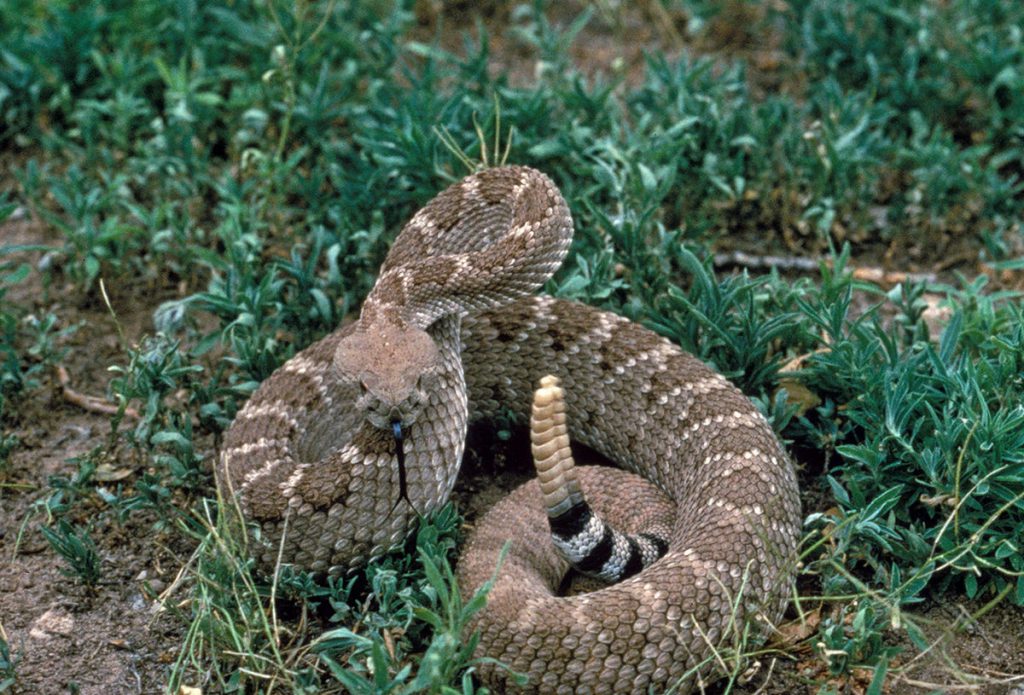
The deadliest snakes come in four types: rattlesnakes, cottonmouths (aka water moccasins), corals, and copperheads. Each type has a primary range: Copperheads are in the Eastern and Central states, cottonmouths are in the Southeast, coral snakes are in the South from Arizona to Florida, and rattlesnakes are like Visa: everywhere you want to be.
There are four distinct types of snake venom, and they each affect the body differently. Proteolytic venom disrupts protein peptide bonds in tissues and causes blood-vessel wall damage, hemorrhaging, and muscle-fiber deterioration. Hemotoxic venom goes after the heart and blood and disrupts blood clotting. Neurotoxic venom attacks the nervous system, including the brain. Cytotoxic venom kills tissue at the site of the bite, causing inflammation and necrosis.
Out of the 37 venomous snakes in the US, these are considered to be the eight deadliest.
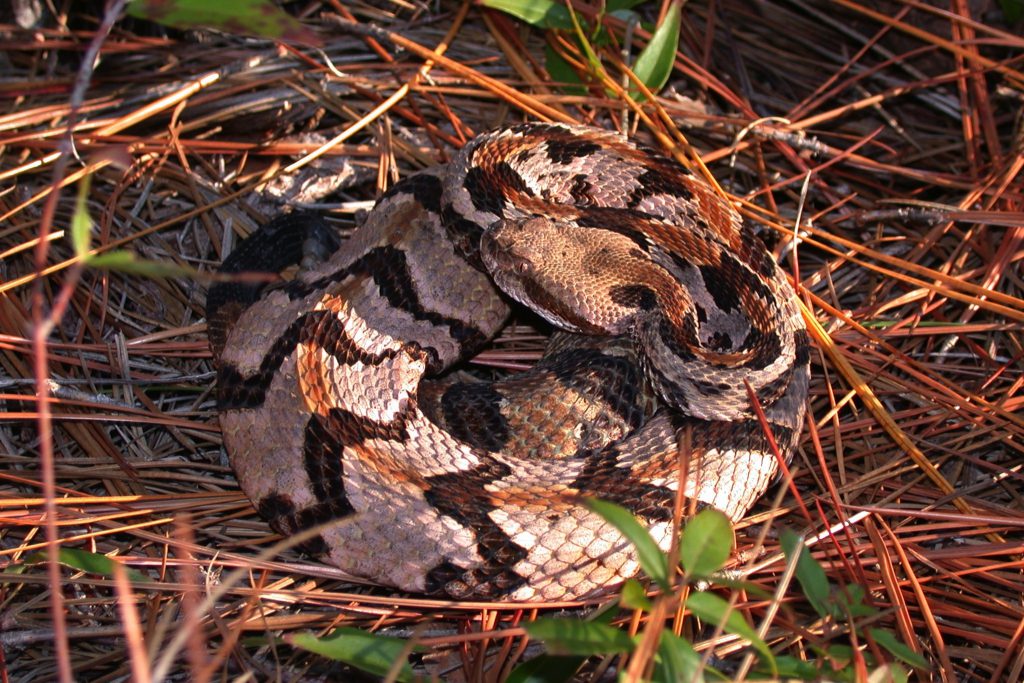
Timber Rattlesnake
This is the perfect place to kick off a deadliest snakes list. Found primarily in the Eastern and Central parts of the US, an adult timber rattler can grow to about 60 inches in length, but snakes as long as 74 inches that weigh almost 10 pounds have been reported.
Its most defining characteristic is the rattle structure at the end of its tail, for which it gets its name. Since individual rattles are added each time a rattlesnake sheds its skin, which can be up to three or four times a year, counting them is not an accurate way to age a snake. Rattlers are not aggressive, but they will defend themselves when threatened or surprised. If you hear the rattles, you’ve been put on notice; be very careful about your next move.
Western Diamondback Rattlesnake
The Western Diamondback calls the Southwest home and isn’t too choosy about its habitat. Grasslands, forests, rocky terrain, and even coastal areas suit it just fine. Adult diamondbacks can reach 7 feet in length and weigh up to 15 pounds. This species is responsible for the most snake bites in the US annually.
Aside from the tell-tale rattle, the diamond pattern on its back and series of dark rings at the end of its tail are reliable identifiers.
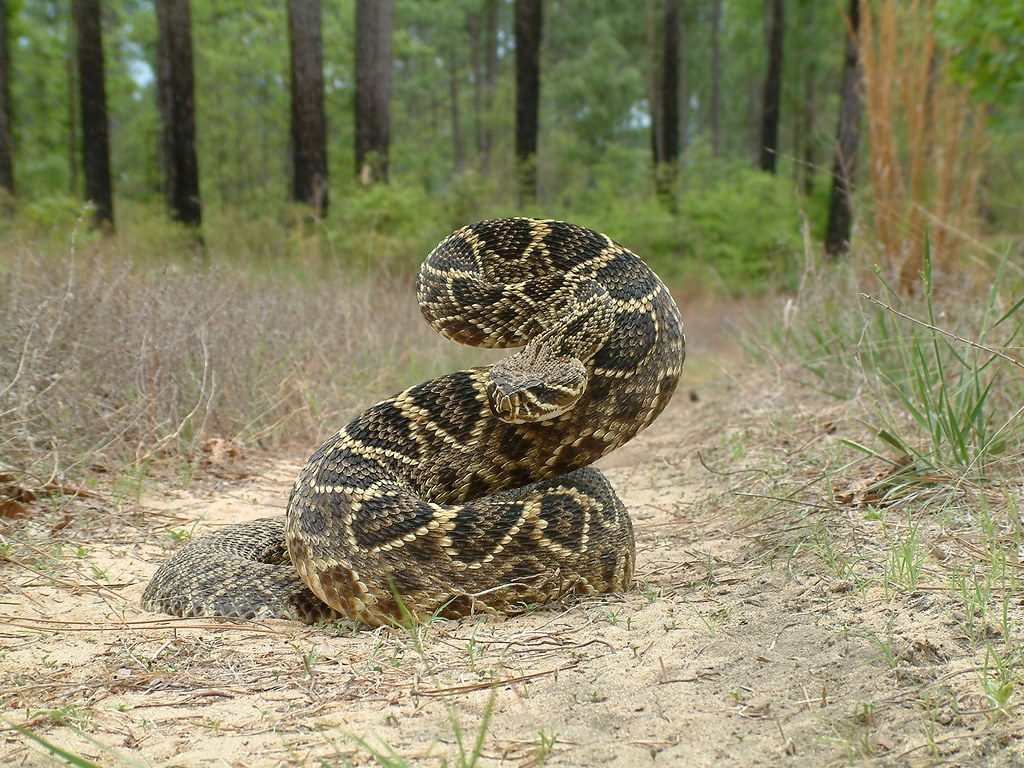
Eastern Diamondback Rattlesnake
If you can see the cat-like vertical slits in its eyes, you better hope you have some sort of glass between you and an eastern diamondback. It’s the longest and heaviest venomous snake in the US and can grow up to 8 feet in length. An eastern diamondback that was shot in 1946 weighed 34 pounds. Thirty. Four. Pounds.
Their venom destroys red blood cells and causes excruciatingly painful tissue damage. They rule the Southeast from scrublands and coastal forests to prairies, the edges of swamps, and even salt marshes.
Prairie Rattlesnake
This Western badass roams pretty much everywhere from Colorado to the Pacific coast. Growing as long as 5 feet, the prairie rattler has a big triangle-shaped head, and its venom will attack your nervous system without prejudice. Their meals of choice include ground squirrels, ground-nesting birds, mice, rats, small rabbits, and prairie dogs.
Mojave Rattlesnake
If you’re wandering near cactus, sage mesquite, or high desert grass, keep your eyes peeled. The Mojave rattler has an extremely venomous bite and calls the desert Southwest home. It’s also one of the smaller rattlesnakes, generally growing no longer than 3 feet.
Mojaves are ambush predators. While it hasn’t been scientifically confirmed, they have a reputation for being aggressive toward humans.
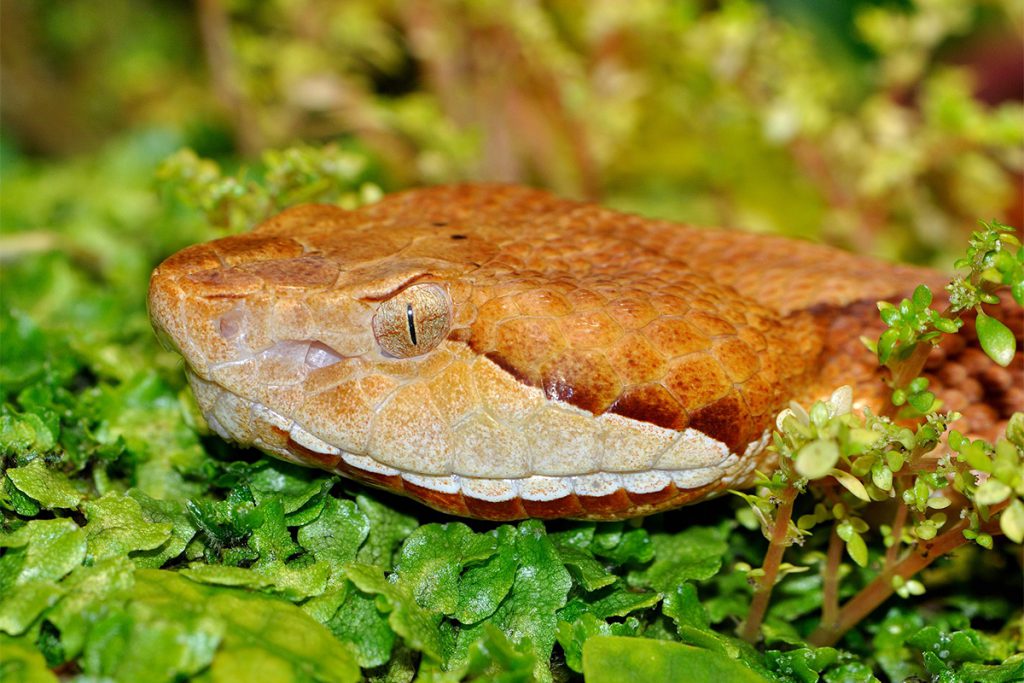
Copperhead
Interesting fact: the length of a copperhead’s fangs is directly related to its size, and babies have venom from birth. An adult copperhead, on average, grows to be 26 to 34 inches long. The largest on record is 53 inches (4 1/2 feet). The copperhead’s range spans the deciduous forests and mixed woodlands of the Eastern and Central US.
The high number of bites from this snake has been attributed to the fact that instead of retreating or rattling when a human gets too close like many snakes do, copperheads freeze in place and rely on their camouflage, which sometimes means people don’t see them until they are too close. Fortunately, copperheads will usually give a warning bite, which contains very little (if any) venom. However, a full shot could be fatal without treatment.
Cottonmouth
If you live in the South and live near a slow-moving and shallow lake, stream, or marsh, you’re smack-dab in cottonmouth territory. Also known as water moccasins, cottonmouths can grow close to 60 inches in length. They are heavy-bodied, can swim better than you, and when they show their open-mouth defensive posture, it looks like a big puff of cotton, hence the name. Disconcertingly, it’s not uncommon for this venomous snake to actually swim toward you in the water rather than away. Take it as a good sign you’re probably in the wrong place.
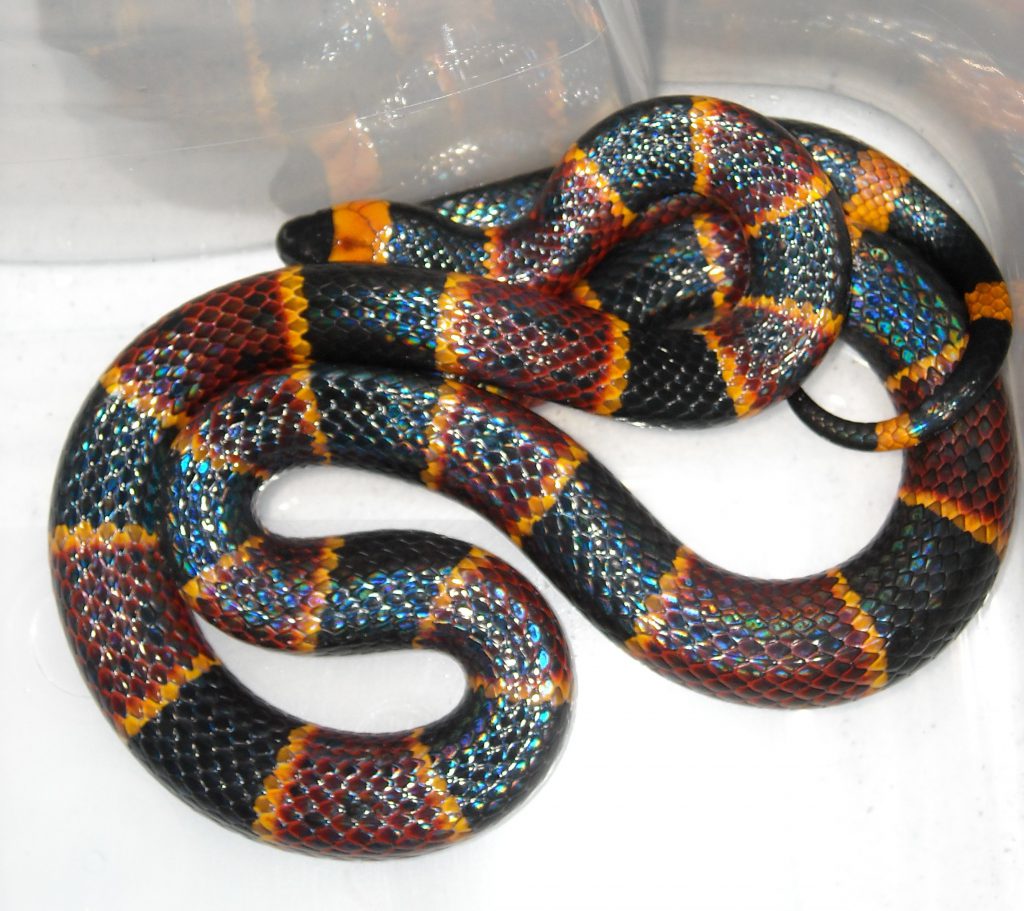
Eastern Coral Snake
The coral snake simply does not give a shit that it’s one of the smallest of the deadliest snakes. Checking in from the Southeast at usually less than 30 inches in length, its venom can cause slurred speech, double vision, and muscular paralysis, eventually leading to respiratory failure in humans without medical attention.
An adult coral snake has enough venom in it to kill five adult humans, but fortunately, they don’t often fire both barrels, so to speak. Only 40% of coral snake bites actually have venom, and even venomous bites generally don’t have enough neurotoxin to cause death. Mind your step, regardless.
Read Next: Starter Kit: How to Hunt Rattle Snakes

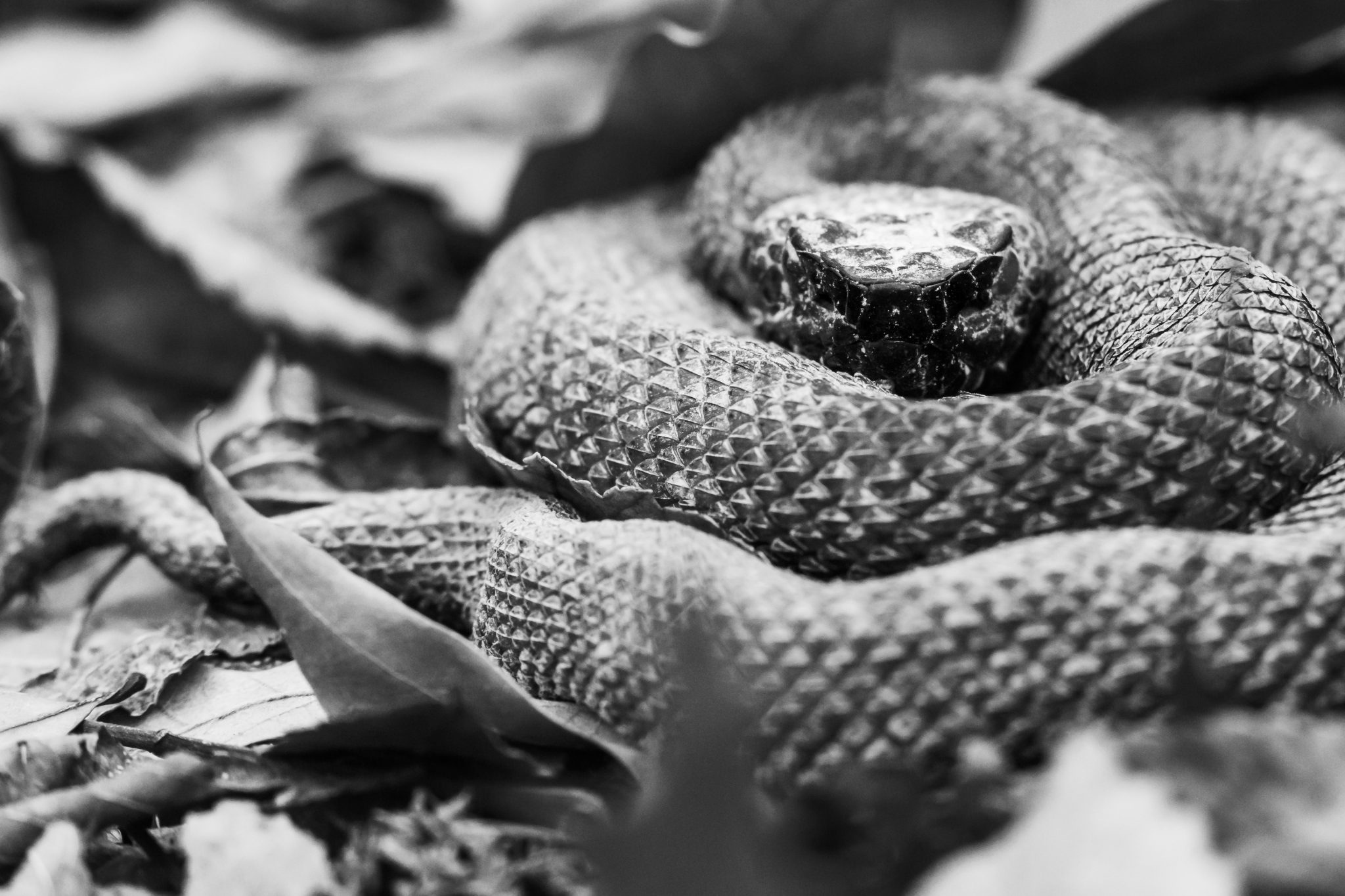

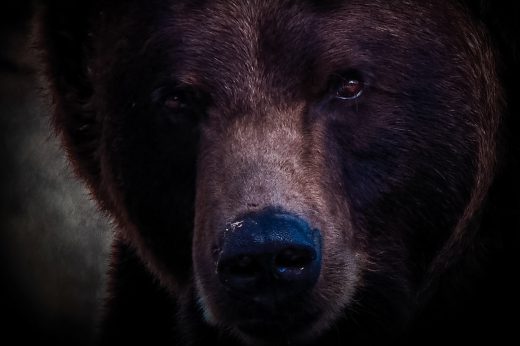

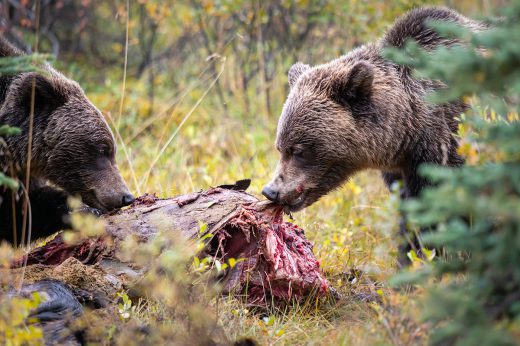


Comments